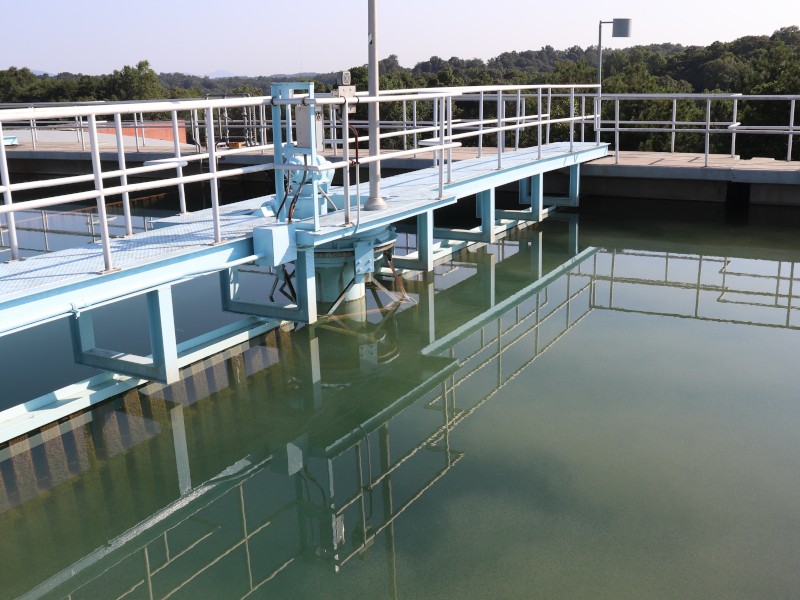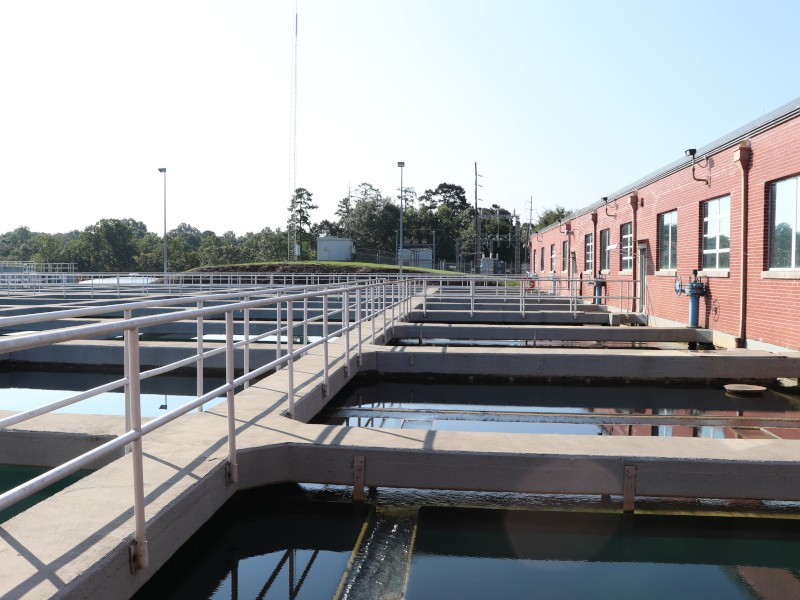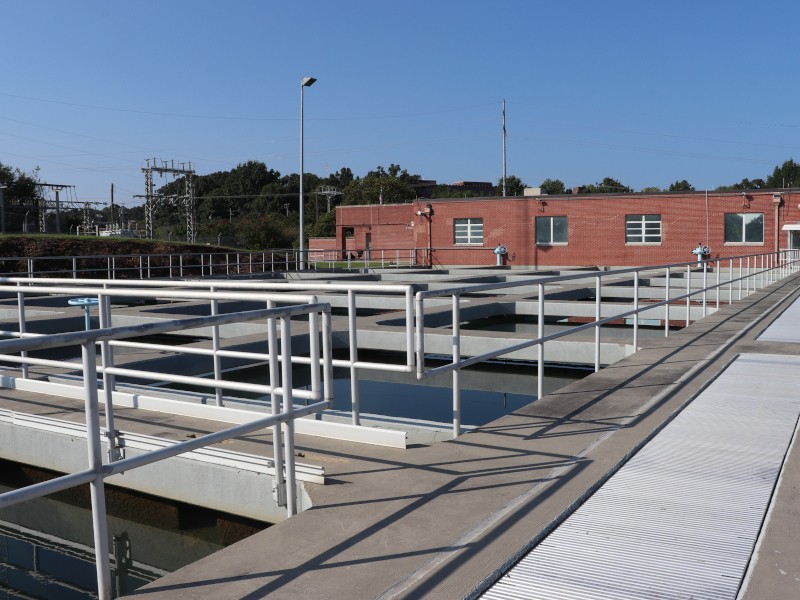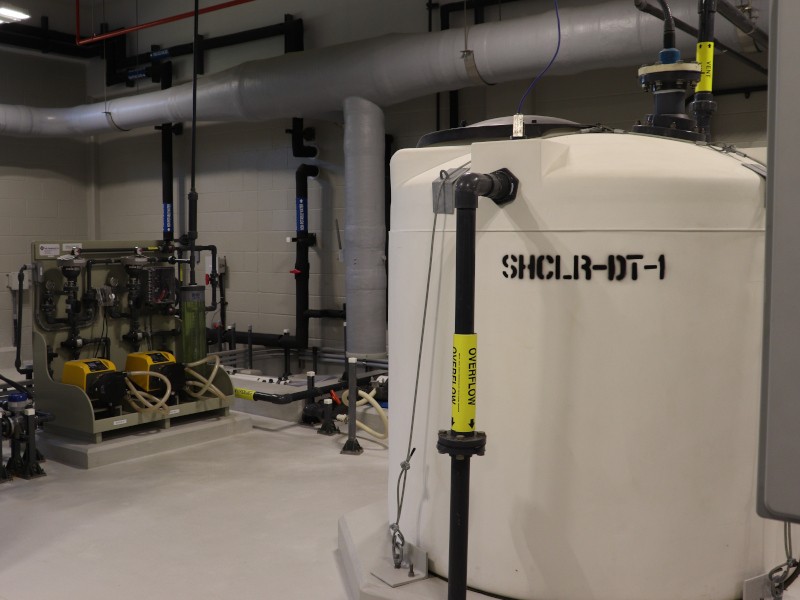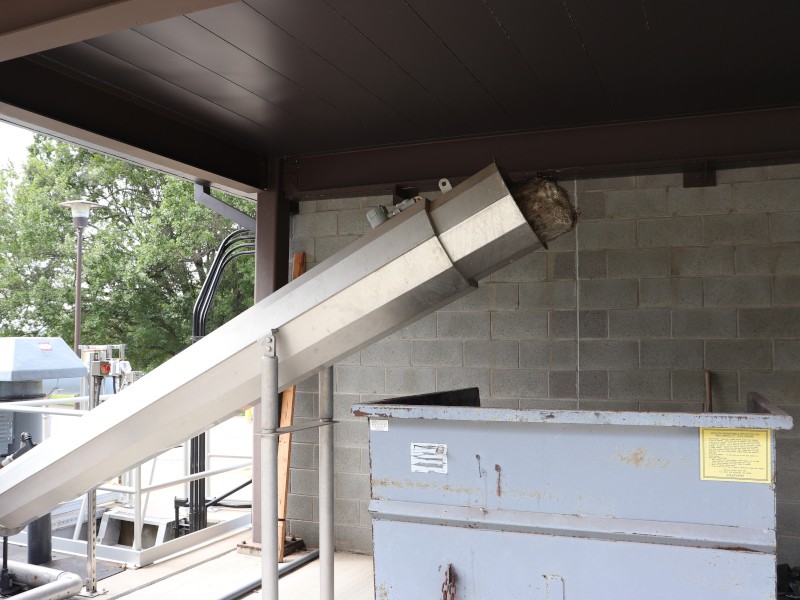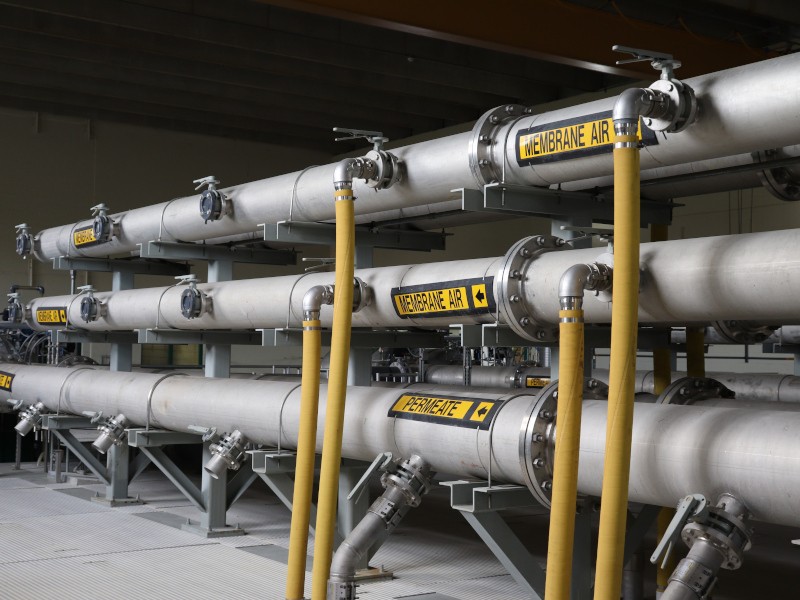August is National Water Quality Month, and in Gainesville and Hall County, several water plants are responsible for getting clean water to homes or businesses and then back into Lake Lanier.
Two of those plants are the Riverside Water Treatment Plant and the Linwood Water Reclamation Plant, which AccessWDUN recently toured.
While the water treatment process typically flies under the public's radar, James Jones, manager of the Riverside Water Treatment Plant, said it plays a big role in the community.
“It’s a great accomplishment to know that we can come in here day in, and day out and consistently put safe drinking water out to the consumer,” Jones said.
The process of getting water cleaned and ready for residents in the area is no small feat, according to Jones.
The treatment process begins with the pumping of water out of Lake Lanier and into the water system at Riverside. Jones said the U.S. Army Corps of Engineers allows Riverside to bring in 35 million gallons a day.
Once the water is pumped into Riverside’s water system, the treatment process begins through two processes known as coagulation and flocculation.
On a basic level, the two processes involve putting chemicals into the lake water to remove any solid particles such as mud or dirt. When these chemicals are mixed into the water, a chemical process occurs that creates small pieces of material which Jones called “flocc.”
The flocc pieces consist of mud or other particles which attach to each other as part of these chemical processes. Jones said after repeating the process several times, these flocc pieces get larger and heavier, and more and more particles are removed from the water, which is when gravity starts to take over.
Instead of filtering out the flocc pieces, Jones said they simply sink to the bottom of their water tanks in a process known as sedimentation. All the flocc pieces are removed from the water tanks using a large mechanical sweep. They are later dried and transported away from the facility.
At this point, the water moves to the next step in the process, where it is filtered. Several more chemicals are added for disinfection at this step in the process. Once that is done, the water is sent to the facility’s clear wells before it leaves the facility for distribution centers around Gainesville and Hall County.
At this point, the water is then readily available in a home or business serviced by the Gainesville Water Department.
Returning wastewater back to Lake Lanier
Once the treated water has been used by a customer, it then travels to a water reclamation plant where it is cleaned again before returning to Lake Lanier.
Bacle Fowler, plant manager at Linwood Water Reclamation Facility, said his team plays a huge role in the community.
“Without us, it would be a mess,” Fowler said. “I came into it, and I saw what it was, and I liked it because I knew that I was doing something to help out. This is going to help the next generation.”
The process at Linwood is considerably different than the process at Riverside, but Fowler said the water still comes out extremely clean before it is placed back in Lake Lanier.
The wastewater is first filtered past several screens at the facility, which collects any large solid objects such as rags. The water passes through several smaller screens, which remove grit, such as sand or eggshells.
Once any solid particles are removed, the water goes into a tank which equalizes the water flow in the system. At this point, it moves onto the biological portion of the filtration, which involves microorganisms.
Fowler compared his team to farmers, as they work to keep the microorganisms alive for filtration purposes.
The microorganisms eat any organic matter that remains in the water, clearing it up prior to its next step.
The water then heads to a series of xenon membranes, which remove any particles that are larger than 0.004 microns. Fowler said the microorganisms cannot fit through these membranes, and neither can the dangerous fecal coliform.
After going through these extraordinarily fine membranes, the water goes through UV treatment, at which point it is ready to return to the lake, and the cycle repeats.
Editor’s note: These explanations specifically relate to Riverside and Linwood, so other plants may use different cleaning processes. The processes mentioned in this story have also been simplified for ease of understanding.


